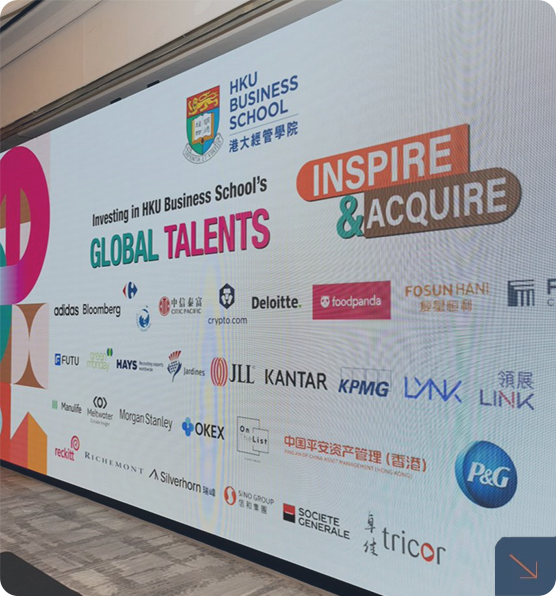AI image generation is rapidly evolving, driving innovation in marketing, advertising design, and art creation. HKU Business School’s Professor of Innovation and Information Management, Prof. Zhenhui Jack Jiang, along with his research team, recently assessed 22 AI models. They reviewed the performance and potential risks of AI models in image generation.

3917 8351
KK 804
- PhD in Business Administration (University of British Columbia), 2004
- Master of Management (Tsinghua University), 1999
- Bachelor of Engineering and Bachelor of Economics (Tsinghua University), 1997
Zhenhui (Jack) Jiang is a professor of Innovation and Information Management and the Padma and Hari Harilela Professor in Strategic Information Management at HKU Business School. He formerly served as the Area Head of Innovation and Information Management at HKU. Prior to joining the University of Hong Kong, he was a full professor of Information Systems and Analytics at School of Computing, National University of Singapore (NUS), where he served on the Faculty Promotion and Tenure Committee. From 2015 to 2018, Prof. Jiang chaired the of SIGHCI of Association for Information Systems (AIS).
Prof. Jiang’s research explores the broad economic and behavioral impacts of cutting-edge information technologies (IT) as well as the effective user interface design of such technologies. His work addresses significant issues in AI, human computer interaction, digital innovation, e-commerce, information privacy, social media, and healthcare. Professor Jiang is currently a Senior Editor for MIS Quarterly and he has also contributed to editorial boards of many leading Information Systems journals such as Journal of AIS (Senior Editor), Information Systems Research (Associate Editor), MIS Quarterly (Associate Editor), IEEE Transactions of Engineering Management. Prof. Jiang’s research is published in premier business journals, such as MIS Quarterly, Information Systems Research, Management Science, and Journal of MIS, as well as in top-tier Computer Science conferences, like CHI. He has secured approximately US$3 million in research funding as a Principal Investigator and an additional US$4 million as a Co-Investigator.
Prof. Jiang has taught extensively across MBA, EMBA, DBA, and executive education programs at prestigious institutions such as HKU Business School, NUS School of Computing, NUS Business School, NUS Lee Kuan Yew School of Public Policy, and the School of Economics and Management at Tsinghua University. He also held positions as a Visiting Professor at Peking University and as a visiting scholar at MIT Sloan School of Management.
Digital Innovation, e-Business Models, Experimental Research Methodology, Applications for Big Data Analytics, Human Computer Interaction
Artificial Intelligence, Human Computer/AI Interaction, Social Media, Information Privacy, Information Search Analytics, Visual Analytics, User Experience Design, Electronic commerce, and Experimental Design.
- Senior Editor: MIS Quarterly (since 2022)
- Senior Editor: Journal of AIS (2017 – 2020)
- Associate Editor: Information Systems Research (2019 – 2022)
- Associate Editor: MIS Quarterly (2012-2015)
- Editorial Board Member: IEEE Transactions on Engineering Management (2011 – 2016)
- Associate Editor: Journal of AIS (2009-2012 and 2016 – 2017)
- Lu, Y., Li, X, and Jiang, Z. “Online-Offline Self-Identity Overlap and Consumer Decision to Acquire Digital-Physical Twins in the Metaverse,” forthcoming Journal of the Association for Consumer Research.
- Alashoor, T., Keil, M., Jiang, Z. and Saffarizadeh, K., “Privacy Concerns and Data Donations: Do societal Benefits Matter?”, forthcoming MIS Quarterly.
- Luo, C., Jiang, Z., Li, X., Yi, C. and Tucker, C. “Choosing to Discover the Unknown: The Effects Of Choice On User Attention To Online Video Advertising,” Management Science, Vol. 70, No. 10, 2024, pp. 6983- 7003.
- Jiang, H., Siponen, M., Jiang, Z. and Tsohou, A. “The Impact of Internet Monitoring on Employees’ Cyberloafing and Organizational Citizenship Behavior: A Longitudinal Field Quasi-Experiment,” Information Systems Research, Vol. 35, No. 3, 2024, pp.1175-1194.
- Yi, C., Jiang, Z. and Zhou, M. “Investigating The Effects Of Product Popularity And Time Restriction: The Moderating Role Of Consumers’ Goal Specificity,” Production and Operations Management, 32(9), 2023, pp. 2723-2739.
- Liu, Y., Jiang, Z. and Choi, B. “Pushing Yourself Harder: The Effects of Mobile Touch Modes on Users’ Self-Regulation,” Information Systems Research, Vol. 34, No. 3, 2023, pp. 996-1016.
- Li, M., Jiang, Z., and Ma, G. “The Puzzle of Experience vs. Memory: Peak-end Theory and Strategic Gamification Design in M-Commerce,” Information and Management, Vol. 60, No. 2, 2023, pp. 103749.
- Yi, C., Jiang, Z., Li, X. and Lu, X. “Leveraging User-Generated Content for Product Promotion: The Effects of Firm-highlighted Reviews,” Information Systems Research, Vol. 30, No. 3, 2019, pp. 711-725.
- Liu, Y, Jiang, Z. and Chan, H. C. “Touching Products Virtually: Facilitating Consumer Mental Imagery with Gesture Control and Visual Presentation,” Journal of Management Information Systems, Vol. 36, Issue 3, 2019, pp. 823-854.
- Yi, C., Jiang, Z., and Benbasat, I. “Designing for Diagnosticity and Serendipity: An Investigation of Social Product-Search Mechanisms,” Information Systems Research, Vol. 28, No. 2, 2017, pp. 413–429.
- Jiang, Z., Wang, W., Tan, B. and Yu, J. “The Determinants and Impacts of Aesthetic Value in Users’ First Interaction with Websites,” Journal of Management Information Systems, Vol. 33, No. 1, 2016, pp. 229-259.
- Choi, B., Kim, S., and Jiang, Z. “Influence of Firm’s Recovery Endeavors upon Privacy Breach on Online Customer Behavior,” Journal of Management Information Systems, Vol. 33, No. 3, 2016, pp. 904-933.
- Yue, Y., Ma, X. and Jiang, Z. “Influence of Content Layout and Motivation on Users’ Herd Behavior in Social Discovery,” Proceedings of the ACM Conference on Human Factors in Computing Systems (CHI), San Jose, USA, 2016.
- Choi, B., Jiang, Z., Xiao, B. and Kim, S. “Embarrassing Exposures in Online Social Networks: An Integrated Perspective of Relationship Bonding and Privacy Invasion,” Information Systems Research, Vol. 26, No. 4, December 2015, pp. 675-694.
- Yi, C., Jiang, Z. and Benbasat, I. “Enticing and Engaging Consumers Via Online Product Presentations: The Effects Of Restricted Interaction Design,” Journal of Management Information Systems, Vol. 31, No. 4, Spring 2015, pp. 213–242.
- Yue, Y., Ma, X. and Jiang, Z. “Share your View: Impact of Co-Navigation Support and Status Composition in Collaborative Online Shopping,” Proceedings of the ACM Conference on Human Factors in Computing Systems (CHI), Toronto, Canada, 2014.
- Jiang, Z., Heng, C. and Choi, B. “Privacy Concerns and Privacy-Protective Behavior in Synchronous Online Social Interactions,” Information Systems Research, Vol. 24, No. 3, September 2013, pp. 579-595.
- Yi, C., Jiang, Z. and Benbasat, I. “Enticing Consumers via Incomplete Product Experience: An Investigation of Online Product Interactivity Designs,” Proceedings of the ACM Conference on Human Factors in Computing Systems (CHI), Vancouver, Canada, 2011
- Sim, D., Ma, X., Zhao, S., Khoo, J. T., Bay, S. L., and Jiang, Z. “Farmer’s Tale: A Facebook Game to Promote Volunteerism,” Proceedings of the ACM Conference on Human Factors in Computing Systems (CHI), Vancouver, Canada, 2011.
- Zhu, L., Benbasat, I. and Jiang, Z. (equal contribution) “Let’s Shop Online together: An Emphirical Investigation of Collaborative Online Shopping Support,” Information Systems Research, Vol. 21, No. 4, pp. 872-891, 2010.
- Chan, J., Jiang, Z. and Tan, B. “Understanding Pop-up Advertising: Impact of Exposure Time, Advertising Intent, and Brand Image,” IEEE Transactions on Engineering Management, Vol. 57, No. 3, pp. 365-379, 2010.
- Jiang, Z., Chan, J., Tan, B., and Chua, W. “Effects of Interactivity on Website Involvement and Purchase Intention,” Journal of the Association for Information Systems, Vol. 11, Issue 1, 2010, pp. 34-59.
- Jiang, Z. and Benbasat, I. “Investigating the Influence of the Functional Mechanisms of Online Product Presentations,” Information Systems Research, Vol. 18, No. 4, 2007, pp. 454-470.
- Jiang, Z. and Benbasat, I. “The Effects of Presentation Formats and Task Complexity on Online Consumers’ Product Understanding,” MIS Quarterly Vol. 31, No. 3, 2007, pp. 475-500.
- Jiang, Z. Wang, W. and Benbasat, I. “Multimedia-based Interactive Advising Technology for Online Consumer Decision Support,” Communications of the ACM, Vol. 48, No. 8, 2005, pp. 92-98.
- Jiang, Z. and Benbasat, I. “Virtual Product Experience: Effects of Visual and Functional Control of Products on Perceived Diagnosticity and Flow in Electronic Shopping,” Journal of Management Information Systems, Vol. 21, No.3, Winter 2004-5, pp. 111-147.
Online video platforms face the challenge of balancing the needs of their users with those of their advertisers. Although users typically prefer to have less intrusive ads, advertisers aim to effectively catch user attention. This paper investigates how the provision of ad choice affects the effectiveness of video advertising. We argue that allowing users to choose an ad to view may trigger a “conjecture-formation-and-confirmation” process that motivates users to pay more attention to the selected ad. Two online experiments and four laboratory experiments are conducted to test the theorized underlying mechanism of the ad choice effect. Study 1 finds when users are unfamiliar (versus familiar) with the content of ad options (i.e., they need to make conjectures about ad content), ad choice is more likely to increase user attention to the chosen ad. Study 2 and Study 3 show that the impact of ad choice on user attention is more likely to be positive when users are enabled to make conjectures about ad content, such as when choice options provide more relevant information about ad content. Study 4a and Study 4b provide more direct support for the underlying mechanism by showing that the ad choice effect is attenuated when users cannot form conjectures about ad content at the choice stage. Study 5 further demonstrates that the positive effect of ad choice is robust across different ad settings. Taken together, these studies show ad choice is more likely to boost the effectiveness of video advertising when the “conjecture-formation-and-confirmation” process is triggered.
Since ChatGPT was introduced, large language models (LLMs) have quickly become a focus in the global tech competition. LLMs are being applied in various fields, presenting ample opportunities for AI development. The U.S. currently leads in technology development and innovation, with its models excelling at the technological forefront. In contrast, Chinese models focus on optimizing for local languages and practical applications. Striking a balance of competition and cooperation between the two countries will be crucial in the coming years.
Since ChatGPT was introduced, large language models (LLMs) have quickly become a focus in the global tech competition. LLMs are being applied in various fields, presenting ample opportunities for AI development. The U.S. currently leads in technology development and innovation, with its models excelling at the technological forefront. In contrast, Chinese models focus on optimizing for local languages and practical applications. Striking a balance of competition and cooperation between the two countries will be crucial in the coming years.
截至7月底,国内共推出超300个大模型。经过大模型数量之争的上半场,下半场中国大模型该如何押宝?“持续稳定的政策支持、庞大的算力规模和广阔的应用场景是中国独特的竞争优势和巨大的发展潜力。”蒋镇辉教授认为,大模型将从数量到更重视应用端发展。
生成式人工智能(AI)工具發展日新月異,香港大學經濟及工商管理學院今日(12日)發表一項人工智能大語言模型評測綜合排行榜,通過港大深圳研究院建立評分系統,比較十多款大模型表現,顯示由中國科企百度開發的「文心一言」,在中文語境下綜合得分最高,但在「通用語言能力」卻跑輸「ChatGPT4-Turbo」,而大部分國產模型在英文語境下表現均處於「稍微劣勢」。
Many mobile applications use push notifications and reminders to explicitly educate, remind, and motivate users to perform healthy behaviors. However, users do not always act according to these explicit digital interventions. Our study investigates whether users’ self-regulation can be implicitly facilitated with a proper mobile interaction design. Specifically, we investigate the impacts of two touch modes that are supported by force-based interaction technology, that is, pressing and tapping. Drawing on the theory of embodied cognition, which suggests that people automatically infer meanings from their bodily actions, we conjecture that pressing, compared with tapping, enhances self-regulation because the action of pressing on the touchscreen embodies resolute approach motivation toward goals. We test our hypotheses in three experiments. The first experiment investigates beverage choices on a mobile app; the second experiment examines goal setting on a fitness app; and the third experiment focuses on personal hygiene learning on a mobile education app. The results from the three experiments show that pressing actions can improve users’ self-regulation in selecting a healthier but less tasty beverage (Study 1), setting higher exercise goals and performing more physical exercise (Study 2), and reducing lapses in maintaining personal hygiene (Study 3). In addition, such effects were more salient among users with a higher level of health knowledge and a promotion-focused health orientation. This study contributes to healthcare IT research by showing that mobile interaction can be leveraged to nudge users toward enhanced self-regulation.
Online retailers employ various kinds of social and marketing information cues to influence consumers’ product interest and purchases. This study focuses on the effects of two types of information cues, product popularity and time restriction on product promotions, on consumers’ product approach behavior. It takes a unique perspective by examining how such effects change as consumers’ shopping goals become more concrete. The results of a field experiment and a laboratory experiment show that product popularity and time restriction may not always have a positive influence on consumers’ product approach behavior. In particular, when consumers have not yet formed specific shopping goals, product popularity and time restriction weaken each other's effects on users’ initial product judgment, whereas these two information cues reinforce each other's effects on consumers’ final product evaluation when consumers’ shopping goals have become more specific. This study deepens our understanding of the individual and interaction effects of product popularity and time restriction at different levels of consumer goal specificity. The findings have significant implications for how retailers can leverage different information cues for promoting products.
Ding! These days, it seems that we live in a sea of nonstop, never-ending mobile notifications: every waking moment, we receive buzzes and pings that remind that we have to do things or be somewhere or respond to someone about something. Ding!
User-generated content (UGC) is increasingly used in the marketing communication mix for promoting products. This research investigates how firms can actively manage consumer-generated reviews in the form of highlighting authentic reviews at firms’ discretion. Whereas highlighting a positive review is expected to lead to positive product evaluations, this practice may elicit consumers’ skepticism if consumers are explicitly informed of the promotional intent of the firm. In three studies, we examine the effect of presenting a firm-highlighted review on consumers’ consumption intention and behavior. Our findings confirm that highlighting a positive consumer review can effectively attract consumers’ attention to this review. However, the heightened attention does not always lead to higher consumption likelihood. In particular, the extremity of a highlighted review will interact with the variance of the review context as well as the reputation of the firm being reviewed to determine the effect of the firm-highlighting practice on consumers’ consumption behavior. When other reviews convey mixed opinions or when the firm has not established a strong reputation, highlighting a positive but less extreme review may effectively improve the likelihood of consumption, but highlighting a review that is extremely positive will not.





